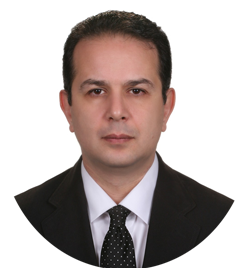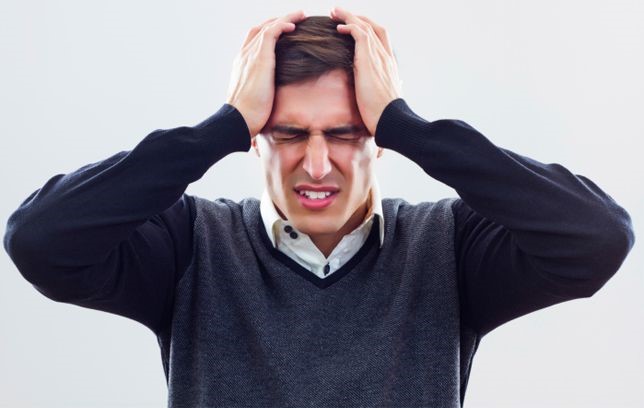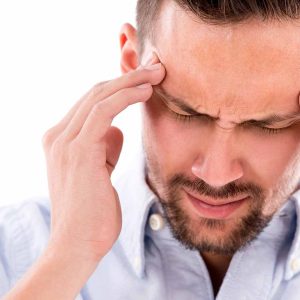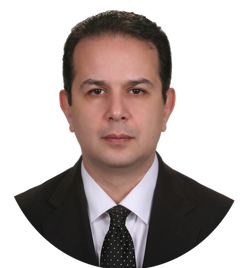Most headaches are not caused by dangerous diseases, but some headaches that are life-threatening illnesses must be treated urgently. The types of headaches are classified according to their causes:
Primary Headaches:
Primary headaches are caused by impaired or overactive brain-sensitive tissues. Primary headache is not a symptom of an underlying disease. The chemical activity of the brain, nerves or blood vessels of the brain or the muscles of the head or neck or a combination of these factors may play a role in the development of primary headaches. Some people have genes that make them more susceptible to early headaches than others.
The most common causes of primary headaches include:
1. Migraine headache: One of the most common types of headaches is Migraine headache. Migraine headache usually occur on one side of the head. Migraine headache occur whit problems in central nervous system, cerebrovascular system, and chemical intermediates in the brain. Migraine provides sensitivity to light and sound and increases blurred vision.
Symptoms of Migraine: Migraine headaches are usually on one side with severe, pulsating pain, with daily activities intensifying and accompanied by gastrointestinal symptoms
Features of Migraine Headache
The International Headache Soceity defines a migraine headache: The person has had headaches more than 5 times, each lasting 4 to 72 hours.
Has at least two of the following characteristics:
Unilateral headache, beating, moderate or severe worsening with physical activity. In addition, it should have at least one of the following: nausea or vomiting, fear of sound and light.
Migraine medication
Mild migraines that do not interfere with a person’s daily activities are usually improved with prescription painkillers (eg, acetaminophen) and non-steroidal anti-inflammatory drugs (such as brofen and adivil). Aspirin and caffeine are also used to treat migraine. To be severe, you should go to your doctor to prescribe the right medicine for you.
Migraine Resonators
Migraine Precipitators:
– Stress
– sleep disorders
– Low blood sugar level
– Hormonal changes
– Flashing light
– Odors
– Smoking
– Alcohol
– Old cheese (tyramine nutrients)
– Chocolate
– Sodium glutamate found in Chinese foods, canned vegetables, soups and canned meats.
– Nitrite processed in sausages, sausages, smoked fish and any kind of meat.
– Aspartame
– Caffeine: Caffeine, like coffee, in small quantities increases alertness and energy. But too much caffeine causes insomnia, dizziness, anxiety, and headaches.
Tension headache:
Women experience Tension headache twice.These type of headaches is not hereditary. Some people suffer from muscle tightness on the back of their neck and scalp due to tightness and contraction. This muscle tension can be caused by:
Inadequate rest, emotional stress,depression,anxiety, and hunger.
signs:
Mild to moderate pain and pressure on the forehead,Head
Sleep problem
Feeling tired
Concentration difficulty
Low sensitivity to light and noise
Muscular pain
Unlike migraine, Tension headache do not cause other neurological symptoms, such as muscle weakness or vision problems and …
Prevention:
Stress limiting
Regular exercise
Enough sleeping
Not taking caffeine and alcohol
Cluster Headache:
Cluster headache is One of the most painful forms of severe headache that develops in or around one eye or one side of the head, usually wakes up patients at midnight.It,s incidence is higher in men.
ETIOLOGY:
The exact cause is unknown, but the pattern of these headaches indicates a malfunction in hypothalamus, unlike migraine and tension headaches,cluster headache has usually not associated with stimulants such as foods,stress and hormonal changes.
Signs :
Severe, deep pain on one side of the head that extends to the eyes. It may have red eyes and runny nose . Pain usually worsens rapidly. Cluster headaches usually occur very quickly without an introduction. Severe and annoying pain, usually centered in or around one eye.
Cluster headache course characteristics
The period of chronic cluster headaches can last up to one year and the painless period may be even less than one month.
During Cluster Headache
· Headaches usually occur every day and sometimes several times a day.
· Each headache attack can last from 15 minutes to 3 hours.
· Headaches often occur at a specific time each day.
· Most headaches occur at night and usually one to two hours after bedtime.
Diagnosis
Cluster headache diagnosis is based on a history and description of headaches, along with neurological tests and imaging to distinguish other causes.
Cluster Headache Prevention
Avoid the following factors:
· Alcohol consumption
· Sleep problems. You should go to bed at a certain hour every day and wake up at a specific hour. Avoid snoozing during the day.
· Increased body temperature which can be due to exercise, hot water bath or anger .
· Nitrates: They are found in wine, smoked meats, cheeses and some medicines .
· Allergies such as seasonal allergies can trigger headaches
Treatment
Emergency treatments :
Oxygen , triptans, Octotide, Local anesthesia.
Prophylactic treatments:
Calcium channel blockers, Corticosteroids, Lithium carbonate.
Intraventinal treatment of headache (radiofrequency)
The interventional operation is performed by a pain specialist under the guidance of X-ray (fluoroscopy) or ultrasound in the operating room. Radiofrequency(RF) is a procedure that not only reduces the severity of pain but also reduces the use of medications. In this method, with special needles under the guidance of fluroscopy, it enters the neural ganglion (sphenopalatine, etc.) and with radiofrequency waves modulates the neural activity of the target area and reduces pain perception in the brain and reduces headache. The effect of this treatment can be sustained for months and even if the need is repeated, the headache will be less severe. In this article we tried to introduce you to the types of headaches and ways to treat them, thank you very much for studing this article.








